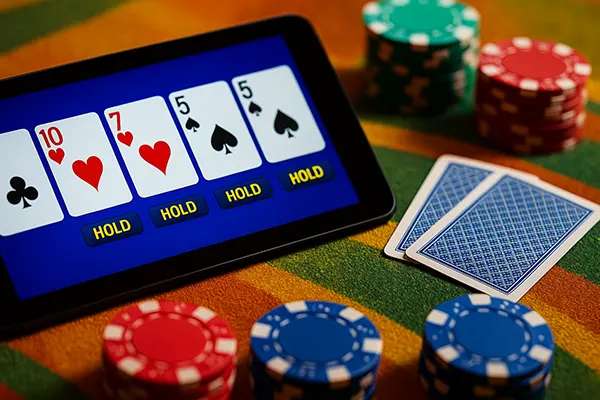
How to Avoid Tilt in Online Poker: Psychology, Control Techniques and Practice
Online poker is not just about maths and strategy. Emotional discipline is just as important as your technical skills. Tilt — a state of emotional agitation that leads to suboptimal decisions — is one of the biggest threats to consistent poker performance. In this article, we’ll explore the psychological aspects of tilt, practical control techniques, and how regular training can help keep your mind stable during the game.
Understanding Tilt and Its Triggers
Tilt refers to a mental state where a player loses control of their emotions, often due to a bad beat, a series of poor outcomes, or conflicts with other players. This emotional disruption can cause players to make irrational decisions, play more aggressively, or chase losses. Identifying early signs of tilt is critical — they often include frustration, impatience, and overconfidence.
Common causes of tilt include variance (losing with strong hands), unrealistic expectations, and personal stress unrelated to the game. These triggers vary among individuals but understanding your own patterns is essential. When unaddressed, tilt can erode your bankroll and confidence quickly.
It is important to distinguish between normal disappointment and actual tilt. While losing a hand can make anyone upset, tilt is when that frustration controls subsequent decisions. This difference is subtle but critical for long-term success in online poker.
Psychological Mechanisms Behind Tilt
From a psychological standpoint, tilt is a natural stress response. It activates the limbic system, particularly the amygdala, which is responsible for emotions like anger and fear. This overrides the prefrontal cortex — the area of the brain responsible for logical thinking and decision-making. As a result, players act impulsively rather than strategically.
Cognitive biases also play a role. For example, confirmation bias can cause a player on tilt to focus only on negative outcomes, further intensifying emotional reactions. Similarly, the gambler’s fallacy — the belief that a win is ‘due’ — fuels destructive decision-making.
Recognising these mental patterns and their physical symptoms, such as increased heart rate and tension, helps players develop self-awareness. With awareness comes the opportunity to regain control before the situation escalates.
Effective Techniques to Regain Control
Taking a break is the simplest and most effective way to stop a tilt spiral. Stepping away from the table — even for a few minutes — allows your brain to reset. Breathing techniques, such as box breathing or 4-7-8 breathing, can help reduce adrenaline and cortisol levels, bringing your body back to a calm state.
Mindfulness practices are especially beneficial. Short meditations, body scans, or simply observing your thoughts without judgement can reduce emotional reactivity. Over time, mindfulness builds resilience, allowing you to remain calm during variance swings.
Using session stop-loss limits is another practical method. By deciding in advance how much you’re willing to lose in one session, you give yourself an automatic exit route before emotions take over. This is a form of pre-commitment — a proven method to avoid behavioural escalation during tilt.
Building a Tilt-Resistant Routine
Establishing a pre-session routine helps set the right mindset. This might include reviewing previous sessions, writing down goals, or visualising specific scenarios and your intended reactions. Creating structure gives your brain something familiar to return to when under pressure.
Post-session reflection is equally valuable. Journaling how you felt, which hands triggered strong emotions, and how you responded helps reinforce emotional learning. Over time, patterns emerge that highlight what you need to work on, both strategically and emotionally.
Physical health supports emotional control. Poor sleep, hunger, and dehydration all make tilt more likely. Poker may be a mental game, but it is deeply affected by the physical state of the body. Maintaining consistent habits off the table strengthens your resilience while playing.

Training Mental Discipline Through Practice
Mental discipline in poker isn’t innate — it’s trained through repetition and intentionality. One method is scenario-based visualisation. By imagining specific tilt-inducing situations and mentally rehearsing calm responses, you prepare your brain to respond more effectively in real games.
Regularly reviewing hand histories with an emotional lens is also helpful. Instead of focusing solely on technical correctness, analyse how you felt during each decision point. Ask: “Was this choice influenced by emotion, or based on logic?” Over time, this builds self-evaluation as a habit.
Another useful tool is mental rehearsal of failures. Preparing mentally for losses — especially bad beats — reduces their emotional sting. This approach is common among athletes and traders, and it works in poker too. Acceptance reduces surprise, and surprise often leads to tilt.
Long-Term Strategies for Tilt Prevention
Developing emotional detachment from outcomes is the ultimate goal. Accepting that variance is a natural part of the game helps shift focus from short-term results to long-term decision quality. The more you internalise this, the less power bad beats have over your mindset.
Finding a support system — friends, forums, coaches — allows for emotional debriefing. Discussing your experiences with people who understand the game provides relief and valuable perspective. This social element can reduce isolation, which often worsens tilt episodes.
Finally, always stay grounded in your motivation. Remind yourself why you play poker and what your goals are. Whether it’s financial gain, competition, or mastering the game, keeping your purpose in mind helps maintain focus during emotional turbulence.



